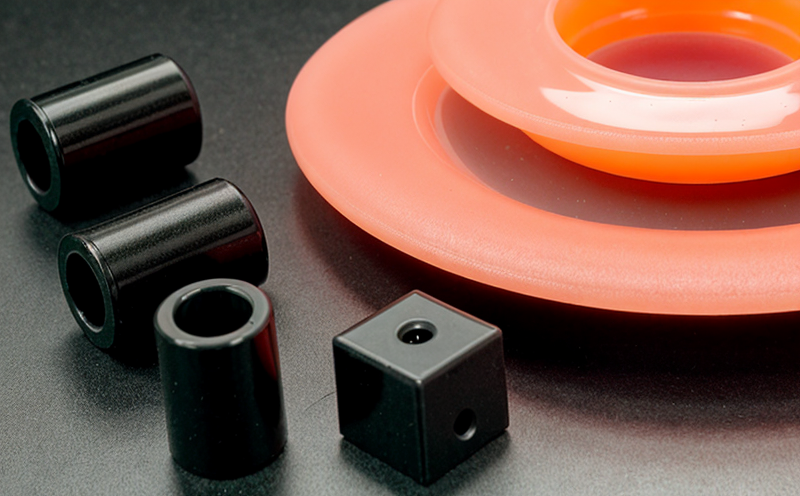DIN EN ISO 16000 VOC Emission Testing of Plastic Leisure Materials
The demand for sustainable and environmentally friendly materials has been a driving force in modern manufacturing. This is particularly true within the sports and leisure sector, where plastics are often used due to their lightweight properties, durability, and flexibility. However, the use of plastic can raise concerns about volatile organic compound (VOC) emissions during production and usage.
DIN EN ISO 16000-5 specifies a procedure for determining VOCs in indoor air using Tenax GC/MS. This standard is crucial for ensuring that plastics used in sports and leisure products do not release harmful levels of VOCs into the environment or the indoor spaces where they are utilized.
The testing involves several critical steps, including specimen preparation, sample collection, and analysis. Specimens must be cut from the plastic materials to ensure a representative sample size for testing. The collected samples undergo rigorous analysis using gas chromatography-mass spectrometry (GC-MS) techniques. This method allows for precise measurement of VOCs in parts per billion.
Accurate compliance with DIN EN ISO 16000 is essential not only from an environmental perspective but also to meet regulatory requirements and ensure consumer safety. For instance, the European Union's Restriction on Hazardous Substances (RoHS) directive requires manufacturers of sports equipment to ensure their products are free from certain hazardous substances, including those that can contribute to VOC emissions.
Our laboratory utilizes state-of-the-art instrumentation, such as a GC-MS system capable of detecting trace levels of VOCs. This high-tech apparatus ensures reliable and consistent test results, which is critical for maintaining the integrity and reputation of our clients' products.
The process also includes data interpretation and reporting. Our team of experts carefully analyzes the results to determine if the plastic specimens meet the stringent standards set by DIN EN ISO 16000-5. Compliance with these standards ensures that the plastics used in sports and leisure applications are safe for both consumers and the environment.
Understanding the implications of VOC emissions is crucial, especially considering the increased awareness of indoor air quality. The testing process helps manufacturers identify potential issues early on, allowing them to make necessary adjustments before product release.
In summary, DIN EN ISO 16000-5 VOC emission testing for plastic leisure materials is a vital service in today's market. It ensures that products meet environmental and regulatory standards while maintaining high-quality performance. By adhering to these stringent procedures, manufacturers can gain competitive advantages and enhance customer satisfaction.
Applied Standards
DIN EN ISO 16000-5 is the standard primarily used in our testing procedures for VOC emission analysis of plastics in sports and leisure materials. This international standard ensures that the testing methods are consistent across different regions, providing reliable data.
- Relevance to DIN EN ISO 16000-5: The standard is designed specifically for indoor air quality control, which makes it particularly relevant for testing plastics used in sports and leisure applications where these materials are often exposed to enclosed spaces.
- Compliance with RoHS Directive: Compliance with DIN EN ISO 16000-5 also aligns with the broader goals of the European Union's RoHS directive, which aims to reduce environmental impact by restricting hazardous substances in electrical and electronic equipment. By adhering to these standards, manufacturers can ensure their products are not only safe but also compliant with international regulations.
- Environmental Considerations: The testing process under DIN EN ISO 16000-5 focuses on reducing indoor air pollution, which is a critical concern in the sports and leisure sector where products often find use within enclosed environments.
By adhering to these standards, we ensure that our clients' products are not only safe but also environmentally responsible. This commitment to quality and compliance is essential for maintaining a competitive edge in the market.
Customer Impact and Satisfaction
The impact of DIN EN ISO 16000-5 VOC emission testing on customer satisfaction is significant, especially within the sports and leisure sector. By ensuring that our clients' products meet stringent environmental and regulatory standards, we contribute to a safer and more sustainable product range.
Customer feedback often highlights the importance of trust in the quality and safety of their products. By providing reliable test results through DIN EN ISO 16000-5 compliant testing, we help build this trust. This, in turn, enhances customer satisfaction and loyalty.
In addition to regulatory compliance, our testing ensures that customers can confidently market their products as environmentally friendly. This is particularly important given the growing consumer demand for sustainable goods. By meeting these standards, clients are better positioned to meet market expectations and capitalize on this trend.
The testing process also allows us to identify potential issues early in the product development lifecycle. This proactive approach not only helps avoid costly rework but also ensures that products hit the market with minimal delays. This efficiency contributes directly to customer satisfaction by delivering high-quality, compliant products promptly.
Our commitment to accuracy and reliability is further enhanced through our use of advanced GC-MS technology. This state-of-the-art equipment provides precise data that we can confidently report back to our clients. The transparency in our testing process ensures that customers have the information they need to make informed decisions about their products.
In summary, DIN EN ISO 16000-5 VOC emission testing is a vital service that significantly impacts customer satisfaction by ensuring product safety and environmental responsibility. This service not only meets regulatory requirements but also supports sustainable business practices and enhances brand reputation.





